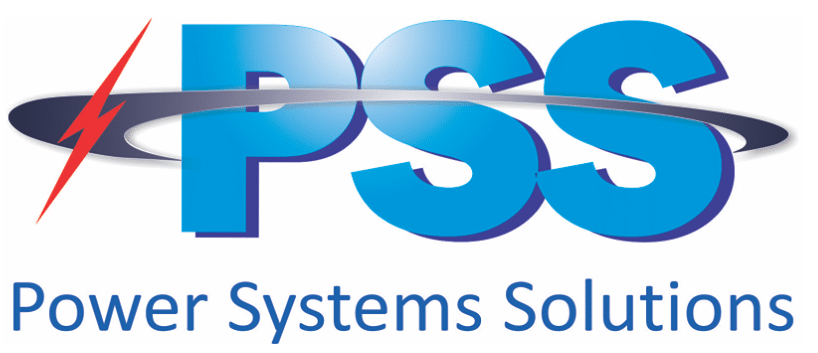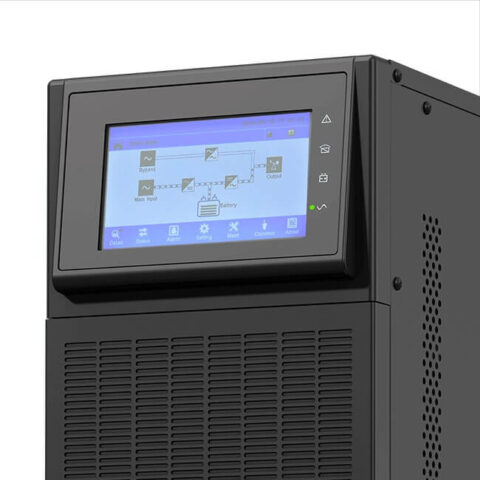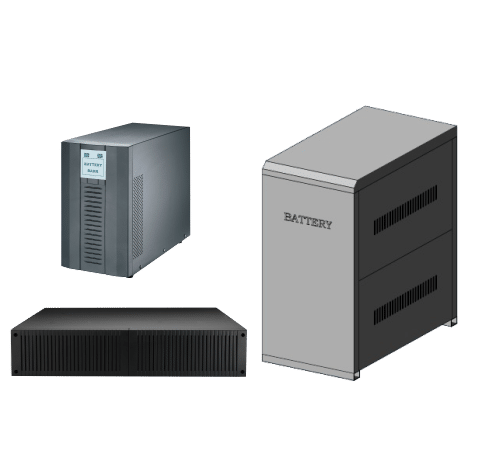Summary
For government and commercial projects, online/double conversion UPS systems offer the highest protection for critical loads. Line-interactive models suit moderate-risk environments with occasional disturbances, while offline UPS is best reserved for non-critical, short-runtime applications. Matching topology to risk, runtime, and load type is essential for a compliant, fit-for-purpose tender submission.
Introduction
UPS topologies aren’t interchangeable, yet they’re often treated that way in tenders. We frequently see “double conversion” specified where a line-interactive system would have sufficed, or worse, no topology requirement listed at all. This creates ambiguity for bidders, introduces cost variability, and risks under-specification.
At PSS Distributors, we review dozens of public and private sector UPS specifications every quarter. This article outlines the key UPS architectures (standby, line-interactive, and online/double conversion) and clarifies when each is appropriate, based on site conditions, criticality, and expected runtime.
What Is a UPS Topology?
UPS topology refers to the architecture of how a UPS conditions and delivers power, in other words, the conversion method between mains power and battery backup.
There are three principal types you’ll encounter in tenders:
- Online double conversion topology
- Line-interactive topology
- Offline (standby) topology
Each has its own implications for cost, availability, protection level, and system complexity.
Why Does UPS Topology Matter in Tenders?
From a procurement standpoint, the topology you specify defines how your power protection system behaves in real-world events: brownouts, voltage spikes, or total outages.
A hospital’s ICU or a rail control system cannot tolerate the same transfer delays or voltage fluctuations that a non-critical admin switchboard might. If your specification leaves the topology vague, it opens the door for bidders to propose systems that may technically comply but fall short of operational needs.
Here’s where tender writers often get caught out: assuming “UPS” is a universal term. It’s not. An incorrectly specified topology may lead to:
- Underprotection, exposing your infrastructure to risks during switchover or power conditioning lapses.
- Overengineering, where an expensive online system is installed where a line-interactive UPS would suffice, driving up both capex and ongoing maintenance.
- Spec challenges or variation claims, particularly in public tenders, where vague technical language invites interpretation.
Our technical team frequently reviews tender documents where topology is either missing entirely or mismatched to the environment. This is easily avoidable with clearer language and a basic understanding of topology strengths and limitations.
Not sure which topology suits your site? Submit your tender spec for review.
What Are the Three UPS Topologies?
1) Online / Double Conversion UPS Topology
When tender specifications demand absolute reliability (no flicker, no lag, no compromise), online or double-conversion UPS systems are the gold standard. This topology is the backbone of our Enduro Series, engineered specifically for critical infrastructure where zero transfer time isn’t negotiable.
How Online / Double Conversion Works
Online UPS systems work by converting incoming AC power to DC, then back to AC. This dual-stage conversion isolates the output power from all input anomalies (voltage drops, spikes, noise, or frequency variations) to deliver a clean, regulated sine wave to your equipment 100% of the time. In other words, the load never “sees” the raw mains supply.
This is markedly different from line-interactive or offline systems, which only intervene when a deviation is detected. In applications where even milliseconds matter (think MRI machines, transport signalling servers, or Tier 3 data centres) those milliseconds can mean data loss, downtime, or worse.
Where Is Online UPS Most Appropriate?
Online UPS systems are ideal for:
- Hospitals (ICUs, imaging departments)
- Data centres (colocation, hyperscale)
- Mining operations
- Control rooms for critical infrastructure (rail, defence, energy)
- Laboratories and test environments with sensitive instrumentation
At PSS, our Enduro 1–3kVA and 6–10kVA systems are deployed in these very contexts. These units deliver up to 98% efficiency in ECO mode, zero transfer time, and runtime scalability through hot-swappable external battery modules (EBMs), allowing up to 17+ hours of backup depending on configuration.
Key Benefits of Online / Double Conversion UPS
- Zero Transfer Time: Always online, no interruption during switchover.
- Power Conditioning: Filters out harmonics, noise, and voltage fluctuations.
- Runtime Scalability: Add up to 4 EBMs for extended autonomy (up to 17 hours with 3kVA).
- Power Factor = 1 (6–10kVA): Maximises real-world capacity.
- Pure Sine Wave Output: Consistent, clean power for sensitive loads.
- ECO Mode: Up to 98% energy efficiency without compromising protection.
- Multiple Form Factors: Rack/tower convertible, with SNMP relay card options.
- Monitoring Ready: Includes USB, RS-232, and optional SNMP card. Alerts via email/SMS.
Tender Specification Tips
Example clause: “UPS system must utilise double-conversion online topology to ensure zero transfer time and continuous power conditioning. System must support extended runtimes via modular external battery packs.”
By explicitly calling for online/double conversion architecture, you not only raise the operational integrity of your project; you also make it clear to bidders that compliance with critical standards is non-negotiable.
2) Line-Interactive UPS Topology
For many commercial and light industrial projects, line-interactive UPS systems offer the sweet spot between protection, performance, and budget efficiency.
At PSS Distributors, our XL+ Series Line-Interactive UPS is engineered with industrial-grade transformer design, high efficiency (up to 98% on mains), and support for extended runtimes through external battery modules. These units are often specified in tender submissions for commercial offices, light IT infrastructure, and environments where power irregularities are infrequent but still present a risk.
How Line-Interactive Topology Works
Line-interactive UPS units provide automatic voltage regulation (AVR). This means they can correct minor power fluctuations such as sags and surges without switching to battery. A built-in autotransformer boosts or lowers voltage as needed, keeping the load stable.
When a true power outage occurs, the UPS switches to battery power within 2–6 milliseconds, fast enough for most commercial equipment to remain uninterrupted. Compared to offline systems, the AVR circuitry makes this topology much more resilient to brownouts and undervoltage events.
Where Is Line-Interactive UPS Most Appropriate?
This topology is ideal when:
- Power disturbances are infrequent or short in duration.
- The load is non-critical but would benefit from voltage conditioning.
- Budget constraints mean online UPS is not justifiable, but reliability remains a concern.
- Equipment will not recognise a 6 Millisecond transfer time
In a tender scenario, line-interactive UPS units often support:
- Building management systems
- Access control panels
- CCTV arrays
- Roller shutters
- Smaller IT racks in government offices/council depots
- Medical Fridges/Freezers
The tender reviewer isn’t necessarily looking for the highest possible redundancy here, but they will want to see justification for the choice.
Key Benefits of Line-Interactive UPS
- Pure sinewave output: Compatible with sensitive and inductive loads.
- High reliability transformer-based design: Minimises service needs and improves robustness.
- Scalable runtime: Use EBXL+ external battery packs to increase autonomy based on load.
- Lithium-ion or SLA options: Choose based on lifecycle cost or runtime requirements.
- Communications: Built-in USB and optional SNMP or relay card for event-triggered actions and remote monitoring.
- Rack and tower mountable: Fits a wide range of electrical and ICT installations.
- Output socket diversity: Includes Australian 10A and IEC output formats for flexibility.
Tender Specification Tips
Example clause: “Unit must deliver voltage regulation between 177–300V before battery cut-in, and support external battery packs for extended runtime.”
If you need help writing technical clauses to meet NPV requirements, contact our technical team. We’re happy to advise.
3) Offline UPS Topology
We do not have offline UPS – Remove our Eco’s from this but we still need to describe offline. I think it is positive to state we do not have offline
Offline or standby UPS systems are best suited for specific, low-risk use cases where cost efficiency is paramount and power disruptions are rare. They’re not designed for high-availability scenarios, but for distributed low-load sites like NBN nodes, ticketing systems, and non-critical ICT, they’re often the most pragmatic choice.
PSS Distributors’ Eco Series UPS range (600VA–2200VA) includes compact, plug-and-play offline models that provide basic battery backup and AVR. They’re widely deployed across council, retail and low-spec utility applications, where runtime and reliability needs are modest.
How Offline Topology Works
Offline UPS units deliver power directly from the mains during normal conditions. When a power outage or severe voltage irregularity occurs, the unit transfers to battery power, typically within 2–6 milliseconds. For connected equipment that can tolerate minor delays, this transfer is acceptable.
All Eco Series units include automatic voltage regulation (AVR) to help stabilise incoming mains voltage, albeit with limited granularity. Output is typically modified sinewave, which suits most entry-level computing and network gear but may not be ideal for inductive or motor-driven loads.
Where Is Offline UPS Most Appropriate?
This topology is ideal when:
- The protected equipment is non-critical and can tolerate brief power gaps.
- Power quality is generally stable, with outages being rare.
- The tender involves budget-limited distributed installs, such as Wi-Fi routers, IP cameras, or EFTPOS systems.
- Runtime requirements are minimal, and space constraints rule out bulkier solutions.
In a government or commercial tender, offline systems are typically specified for:
- Point-of-sale (POS) terminals
- Local network hardware (e.g. routers, NBN modems)
- Entry-level building intercoms or signage
- Ticketing kiosks and vending machines
- Security DVR/NVR systems
The justification is key: if the load is non-mission-critical and doesn’t require redundancy or pure sinewave output, offline UPS can meet spec, but only if correctly scoped and documented.
Key Benefits of Offline UPS
- Cost-effective protection: Ideal for tenders that require coverage of multiple low-load endpoints.
- Compact form factor: Models like the Eco800L are wall-mountable and space-saving.
- AVR voltage correction: Provides line conditioning even before switching to battery.
- Socket diversity: Australian 10A and surge-only outlets support flexible deployment.
- Basic runtime coverage: Up to 60 minutes at 100W load (Eco800L), suitable for brief outages.
- RJ45 surge protection: Protects network lines from surges and spikes.
- USB monitoring: Includes USB connectivity for local monitoring and safe shutdown.
Tender Specification Tip
Example clause: “UPS must deliver pure sine wave output with ≤2ms transfer time and AVR. Suitable for low-risk ICT environments only.”
If your specification includes phrases like “zero transfer time,” “pure sine wave output,” or “modular battery expansion,” offline UPS models will not meet compliance.
How to Select the Right UPS Topology for Your Tender Project
More than being a checkbox exercise, specifying the correct UPS topology is a key determinant of operational continuity, serviceability, and long-term value for the asset owner. If you’re involved in drafting tender documents for government, infrastructure, or commercial bids, a misaligned UPS choice could lead to overcapitalisation, under-protection, or both.
At PSS Distributors, we work closely with consultants, facilities managers and procurement officers to guide topology selection based on real-world operating environments. Here’s what to consider:
1) Site Criticality and Load Type
- Mission-critical systems (ICUs, data centres, control rooms) demand uninterrupted, high-quality power, which means online/double conversion is your benchmark.
- Moderately critical loads (access control, BMS panels, commercial servers) typically warrant line-interactive units with AVR and pure sinewave output.
- Low-priority endpoints (ticketing kiosks, routers, basic signage) are often best served by offline UPS units that can ride through short outages.
2) Runtime Requirements and Autonomy Planning
- Map out your required hold-up time during an outage. Will it need to last seconds, minutes, or more?
- Double conversion and line-interactive units from PSS support extended runtime through external battery packs, especially relevant where generator spin-up time or remote servicing delays are a factor.
3) Power Environment and Grid Stability
- In metro locations with reliable supply, line-interactive topology may be entirely sufficient.
- In regional, mining, or edge deployments where mains fluctuations are frequent, the voltage conditioning and surge protection offered by online UPS becomes essential.
4) Budget and Lifecycle Cost Considerations
Initial capex is only part of the equation. Factor in:
- Battery replacement intervals (SLA vs lithium)
- Efficiency under typical load (wasted energy costs)
- Downtime impact if the unit fails or can’t be serviced quickly
Offline UPS units may win on upfront cost but may fall short in total cost of ownership if misapplied to sensitive environments.
Topology Selection Comparison Table
| Criteria | Online (Double Conversion) | Line-Interactive | Offline |
| Power Quality | ✅✅✅ | ✅✅ | ✅ |
| Cost | $$$ | $$ | $ |
| Transfer Time | 0 ms | ~2–4 ms | ~6–10 ms |
| Best For | Hospitals, data centres, defence | Offices, SME, light ICT | Non-critical, distributed endpoints |
Every project has different risk thresholds and performance expectations. If you’re unsure which direction your spec should take, our team is happy to walk you through real-world scenarios and model runtimes using your exact load requirements.
Download our UPS Tender Specification Template, a free, editable Word document designed for consultants and facility planners writing UPS tender clauses.
UPS Topology and Australian Tender Compliance
For many government departments, health authorities, and infrastructure contractors, UPS topology isn’t a suggestion but a line-item requirement.
In our experience at PSS Distributors, most federal and state-level tenders, particularly those relating to public health, defence, transport, and utilities, mandate online (double conversion) UPS systems as the minimum standard for critical loads. This is especially true for ICU wards, server rooms handling public data, communications nodes, and traffic signal control cabinets.
The reason is straightforward: compliance with ISO/IEC 62040-3 performance classification, no-break transfer, and consistently clean output regardless of input variation. These expectations reflect both operational risk and governance standards.
However, not all loads require this level of protection. We frequently assist contractors and consulting engineers in justifying a mixed-topology approach when budget efficiency is needed:
- Allocating online UPS to essential loads
- Line-interactive to conditioned ICT rooms
- Offline units to signage, general-purpose computing, or endpoint devices.
Importantly, we’ve supported dozens of successful submissions by providing detailed technical conformity letters, model runtime tables, and lifecycle cost summaries. These allow specifiers to satisfy probity and compliance requirements while tailoring solutions to actual risk.
If your tender includes a clause like:
“UPS system must provide continuous power without transfer interruption under all operating conditions…”
…you’re almost certainly expected to specify an online UPS with no-break operation. If the clause is ambiguous or open to interpretation, we can help unpack the implied compliance obligations and recommend matching solutions from our GP and Enduro online ranges.
Need to cross-reference your draft with current compliance norms? Submit your UPS spec for review and our engineering team will return with marked-up guidance within 48 hours.
UPS Topology FAQs
What is the difference between online and line-interactive UPS?
Online (double conversion) UPS systems provide uninterrupted power by constantly converting incoming AC to DC and then back to AC. This ensures clean, stable output regardless of input fluctuations.
Line-interactive UPS units, by contrast, regulate voltage using an autotransformer and only switch to battery when the power drops or surges beyond a set threshold. The transfer time is typically 2–6ms, which is sufficient for most non-critical loads but not compliant for zero-break applications.
Why is double conversion UPS better for sensitive loads?
Double conversion technology isolates the load from all input anomalies:
- Voltage sags
- Surges
- Frequency variations
- Harmonics
That’s why it’s the gold standard for protecting hospital medical equipment, SCADA systems, and critical IT infrastructure.
These UPS systems offer zero transfer time, pure sinewave output, and the ability to run on generator input without brownout risk. For tenders with references to “no-break,” “true online,” or “continuous output conditioning,” this is the topology to specify.
Can I specify line-interactive UPS in government tenders?
Yes, you can specify line-interactive UPS in government tenders if the application and specification justify it.
Line-interactive systems like our XL+ Series are suitable for secondary loads such as building management controllers, CCTV, or secure access systems where occasional voltage correction is needed but full online protection is not mandated.
However, be cautious: if the tender documentation mentions mission-critical infrastructure or refers to IEC 62040-3 Class 1 performance, an online UPS is almost always expected. If you’re unsure, we’re happy to assist with specification alignment and clause interpretation.
Final Considerations for Tender-Ready UPS Topology Selection
Choosing the right UPS topology is a technical decision with real operational consequences. Whether you’re specifying for a new-build hospital, transport node, civic facility, or critical comms hub, each topology comes with trade-offs in cost, performance, and compliance.
At PSS Distributors, we don’t just supply UPS systems but help tendering authorities, engineers and project managers make informed, defensible choices. With decades of industry experience and a product range built for Australian conditions, we support you at every stage: from runtime modelling and load calculation to clause formulation and product documentation.
If you’re preparing or reviewing a UPS specification as part of a government or commercial tender, take advantage of the resources below. They’re designed to save you time, eliminate ambiguity, and ensure technical alignment from day one.
Resources
Download the UPS Tender Cheat Sheet →
Fast-reference guide to redundancy, battery selection, recharge times, and topology specs.
Submit Your Tender Spec for Review →
Upload your draft, and our technical team will advise if it meets performance, compliance and operational benchmarks.
Download UPS Specification Template (Word Format) →
Pre-filled with editable clauses for runtime, battery, diagnostics, and redundancy. Built for procurement officers and consultants.




